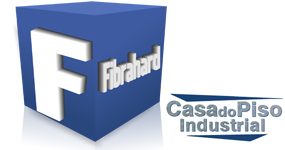Hybrid Integration Platform: Definition, Benefits, And Examples
- Posted on 20 de junho de 2023
- in Software development
- by admin
Staying ahead of those advancements will allow you to future-proof your IT surroundings and proceed to drive innovation in your organization. The HexaSync platform permits customers to easily track knowledge from the supply to the vacation spot system. Therefore, companies can simply detect errors, know the trigger of the issue, and even fix the error themselves if it isn’t an expert hybrid integration solutions technical error. In the absence of integration, your employees are forced to hop between purposes just to reenter information. This is not only tedious and ugly to carry out but also can lead to consequential errors, from invoicing purchasers the wrong quantity to provisioning the inaccurate set of apps for model new hires.
Course Of Automationprocess Automation
This enables organizations to build event-driven workflows and implement reactivesystems that may deal with advanced occasion processing. Some enterprises mistakenly consider that one of the only ways to implement hybrid integration is to utterly overhaul their IT infrastructure and exchange all of their methods and components with the most recent variations. Not solely is that this an ineffective strategy, it additionally ignores the reality that many legacy parts can nonetheless serve key features in a hybrid IT setting. As the Internet of Things (IoT) and edge computing proceed to expand, HIPs might want to assist extra various and distributed knowledge sources. The capacity to integrate data from sensors, units, and edge areas into centralized methods will turn into more and more necessary.
Case-study: Elasticio Integrates For Material Home Cloud Crm With On-premises Erp & Ecommerce
It combines the capabilities of legacy on-premises integration tools with cloud-native applied sciences to ensure frictionless connectivity between your techniques and business applications regardless the place your data is hosted. Your organization’s integration and automation requirements are troublesome to foretell over time. As businesses proceed to generate huge volumes of data, managing it effectively becomes more and more complex. Hybrid integration platforms provide highly effective tools for seamless data integration throughout on-premise and cloud-based applications. With HIPs, organizations can make sense of the data they generate or process and derive actionable business insights that enhance efficiencies.
Legacy Technology Obtained You Down? Attempt Microservices And Cloud-native Structure
Hybrid integration platforms make use of a batch transfer model to transfer data quickly. With high information switch charges, more complicated tasks can be performed throughout the community. However, this strategy may be pricey and sophisticated to provoke in-house, and it could not account for your whole requirements.

This method enables the solutions could be constructed and managed individually from the core solution, as well as change and take away interfaces simply as wanted. Finally, a fastly increasing requirement or key issue of hybrid data integration instruments is the user experience and the concept of citizen builders and integrators. These are people who understand the enterprise wants and information flows but aren’t technically minded. Rather than having to put in writing lines of code citizen integrators can use visual tools to realize integrations.

By identifying what kind of connections you will want and with which partners, you will be able to find out what assets you must have. With hybrid integration technology, enterprises can significantly increase the variety of services and products they provide. It is possible as a result of they will integrate any system and software with some other system. Hybrid integration provides the perfect balance for enterprises, leveraging advantages of local and cloud systems and allowing them to remain aggressive. An HIP is a model new round of development, as opposed to monolithic management structures.
Hybrid integration is claiming a extra important function in how organizations connect and share information with their buying and selling companions. Ever since cloud applications have begun to realize ground, it’s a should to enable connectivity between them and on-premise systems. Whenever there are endpoints of different nature (e.g., cloud & on-premise), we can speak about hybrid integrations. They often lack the required B2B or B2C web companies or API points, which are required to successfully connect with e-commerce platforms, PIM, CRM, WMS, and different systems for digital progress. While companies have to work with consultants or integration specialists to develop these API factors in the ERP they wish to combine, Alumio provides a novel API Plugin.
In other words, an integration platform supplies organizations with the integration tools they want to connect their methods, purposes and data across their environment. While the hybrid integration platform market is full of choices, some solutions will be more useful to your business than others. For extra perception into the components that separate good solutions from nice ones, see our earlier part on the subject. Lastly, enterprise integration tools for hybrid cloud ecosystems are usually very versatile. Fiorano supports event-driven integration, allowing applications to react and reply to real-time eventsand information adjustments.

Hybrid integration platforms scale back the quantity of growth time needed to get applications to work collectively. With time-saving practices corresponding to low-code and drag-and-drop capabilities, much less time-consuming development, allowing builders and architects to concentrate on digital transformation initiatives versus piecemeal coding duties. Adeptia’s API-led approach makes integration seamless throughout cloud, on-prem, and hybrid environments.
But it also proves to be extraordinarily flexible, permitting organizations to adapt to altering enterprise wants and IT landscapes by integrating new cloud purposes with present on-premises techniques. As you employ more and more cloud apps, however you also rely on your legacy technologies, hybrid integrations will let you make these techniques discuss to one another. Depending on the case, typically it may be quite challenging to connect these different functions and take care of the different knowledge standards, protocols, and all the opposite things that come to integrations.

Hybrid integrations can also make positive that data sharing can be facilitated by using these methods from the “old world” that wouldn’t be attainable in any other case. Cloud integration platforms are increasingly embedded in SaaS and different applications, providing integration as a service. This growth is increasing the use and flexibility of integration processes, leading to a surge in purpose-built functions enhanced by embeddable integrations. Integration ensures seamless cooperation between totally different purposes and information, especially essential in IoT, where it bridges IoT gadgets, data, and platforms with conventional IT belongings like enterprise apps and legacy information. The approach employs middleware options (e.g., ESB, iPaaS, and ETL tools) to tackle IoT connectivity and backend integration.
- It’s a listing so you are able to do your analysis easily and start your analysis process collectively with your team.
- A HIP can join these disparate methods, enabling them to share data in real-time.
- However, for giant organizations, enterprise iPaaS might help considerably when it comes to integrating multiple enterprise-level purposes and acquire real-time insights into the enterprise.
- With the adoption of microservices and serverless computing, HIPs will provide unprecedented agility and scalability.
- In your hybrid IT setting, real-time data exchange is usually essential for maintaining techniques synchronized and responsive.
Not to say, as the large knowledge wants pushed by digital transformation continue to evolve, the hybrid cloud surroundings should constantly adapt. Though cloud-based integrations can simply scale and interoperate with other cloud-based providers, on-premises functions might wrestle to maintain tempo. Learn how a hybrid integration platform can help organizations to manage business-critical information in both on-premise functions and the cloud.
However, for big organizations, enterprise iPaaS may help considerably when it comes to integrating a quantity of enterprise-level functions and gain real-time insights into the business. A HIP solution is usually a one-and-done funding, meaning one platform can examine every field for required information integration capabilities. On the opposite hand, an iPaaS solution may require separate platforms to scrape and cleanse knowledge from on-premises techniques, creating a further expense.







